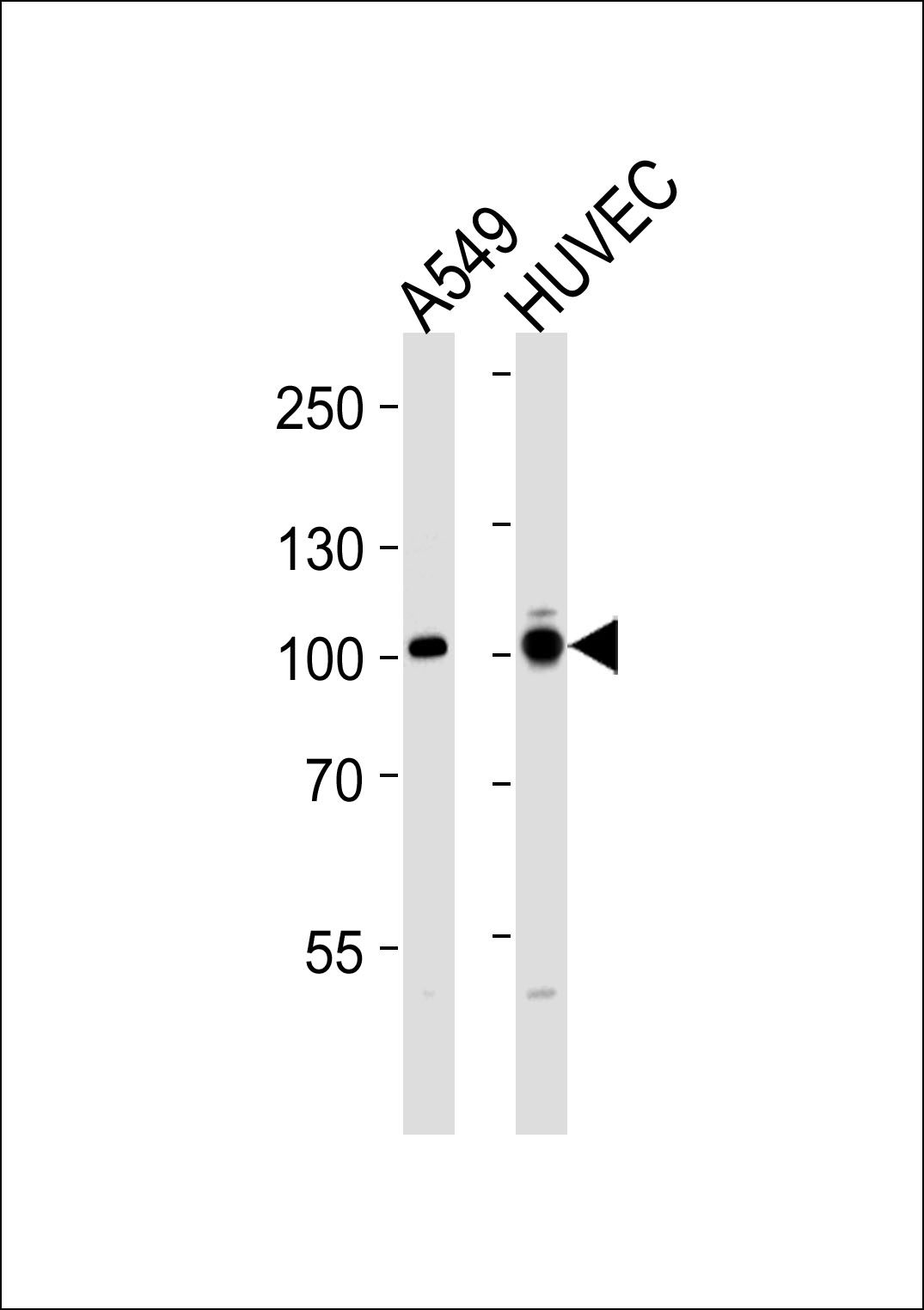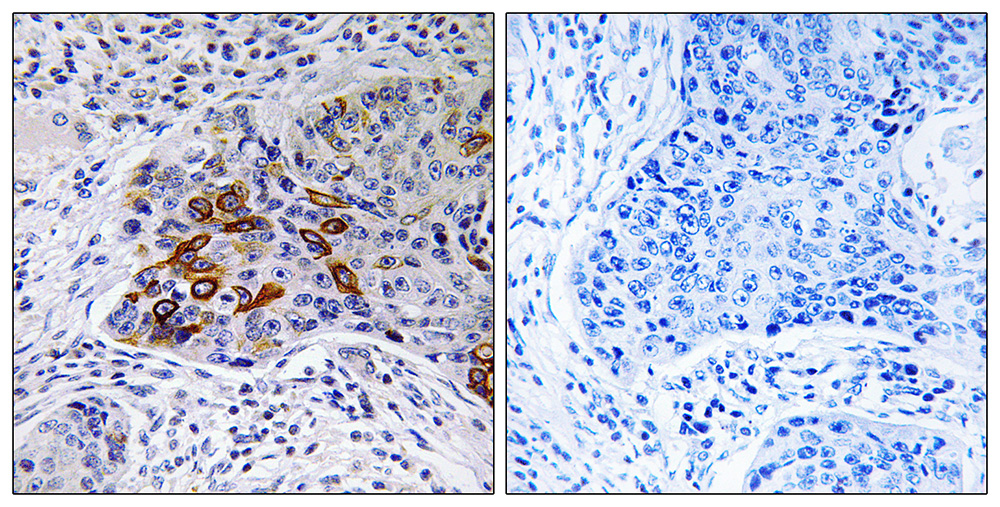ADCY9 Antibody
Purified Rabbit Polyclonal Antibody (Pab)
- SPECIFICATION
- CITATIONS: 1
- PROTOCOLS
- BACKGROUND

Application
| WB, IHC |
|---|---|
| Primary Accession | O60503 |
| Reactivity | Human |
| Host | Rabbit |
| Clonality | Polyclonal |
| Calculated MW | 151 KDa |
| Antigen Region | 955-983 aa |
| Gene ID | 115 |
|---|---|
| Other Names | Adenylate cyclase type 9, ATP pyrophosphate-lyase 9, Adenylate cyclase type IX, Adenylyl cyclase 9, ADCY9, KIAA0520 |
| Dilution | WB~~ 1:1000 IHC~~1:50-1:100 |
| Format | Rabbit IgG in phosphate buffered saline (without Mg2+ and Ca2+), pH 7.4, 150mM NaCl, 0.09% (W/V) sodium azide and 50% glycerol. |
| Storage Conditions | -20℃ |
| Name | ADCY9 |
|---|---|
| Synonyms | KIAA0520 |
| Function | Adenylyl cyclase that catalyzes the formation of the signaling molecule cAMP in response to activation of G protein-coupled receptors (PubMed:10987815, PubMed:12972952, PubMed:15879435, PubMed:9628827). Contributes to signaling cascades activated by CRH (corticotropin-releasing factor), corticosteroids and beta-adrenergic receptors (PubMed:9628827). |
| Cellular Location | Cell membrane; Multi-pass membrane protein |
| Tissue Location | Detected in skeletal muscle, pancreas, lung, heart, kidney, liver, brain and placenta (PubMed:10987815, PubMed:9628827) Expressed in multiple cells of the lung, with expression highest in airway smooth muscle (PubMed:12972952). |

Provided below are standard protocols that you may find useful for product applications.
Background
May play a fundamental role in situations where fine interplay between intracellular calcium and cAMP determines the cellular function. May be a physiologically relevant docking site for calcineurin (By similarity).
References
Hacker B.M.,et al.Genomics 50:97-104(1998).
Small K.M.,et al.Pharmacogenetics 13:535-541(2003).
Tantisira K.G.,et al.Hum. Mol. Genet. 14:1671-1677(2005).
Paterson J.M.,et al.Submitted (FEB-1999) to the EMBL/GenBank/DDBJ databases.
Toyota T.,et al.Submitted (MAR-2001) to the EMBL/GenBank/DDBJ databases.
If you have used an Abcepta product and would like to share how it has performed, please click on the "Submit Review" button and provide the requested information. Our staff will examine and post your review and contact you if needed.
If you have any additional inquiries please email technical services at tech@abcepta.com.














 Foundational characteristics of cancer include proliferation, angiogenesis, migration, evasion of apoptosis, and cellular immortality. Find key markers for these cellular processes and antibodies to detect them.
Foundational characteristics of cancer include proliferation, angiogenesis, migration, evasion of apoptosis, and cellular immortality. Find key markers for these cellular processes and antibodies to detect them. The SUMOplot™ Analysis Program predicts and scores sumoylation sites in your protein. SUMOylation is a post-translational modification involved in various cellular processes, such as nuclear-cytosolic transport, transcriptional regulation, apoptosis, protein stability, response to stress, and progression through the cell cycle.
The SUMOplot™ Analysis Program predicts and scores sumoylation sites in your protein. SUMOylation is a post-translational modification involved in various cellular processes, such as nuclear-cytosolic transport, transcriptional regulation, apoptosis, protein stability, response to stress, and progression through the cell cycle. The Autophagy Receptor Motif Plotter predicts and scores autophagy receptor binding sites in your protein. Identifying proteins connected to this pathway is critical to understanding the role of autophagy in physiological as well as pathological processes such as development, differentiation, neurodegenerative diseases, stress, infection, and cancer.
The Autophagy Receptor Motif Plotter predicts and scores autophagy receptor binding sites in your protein. Identifying proteins connected to this pathway is critical to understanding the role of autophagy in physiological as well as pathological processes such as development, differentiation, neurodegenerative diseases, stress, infection, and cancer.


